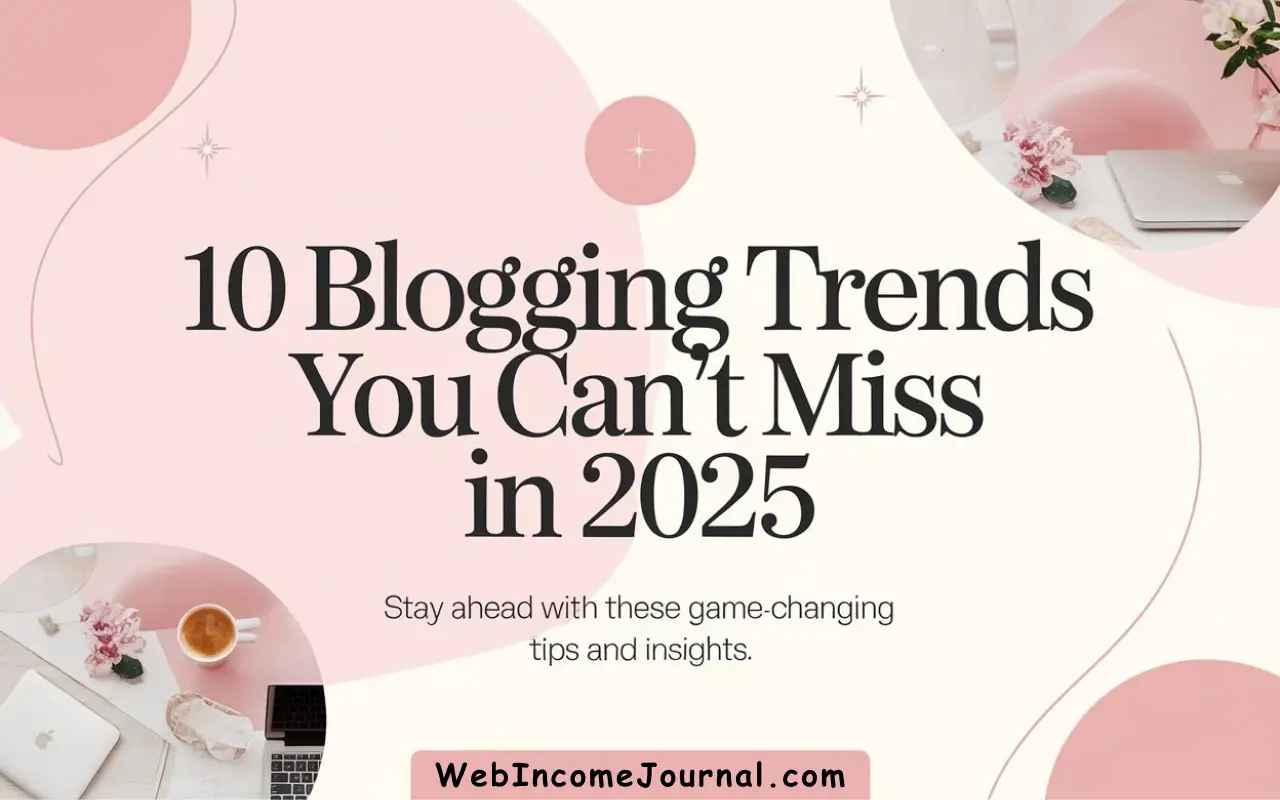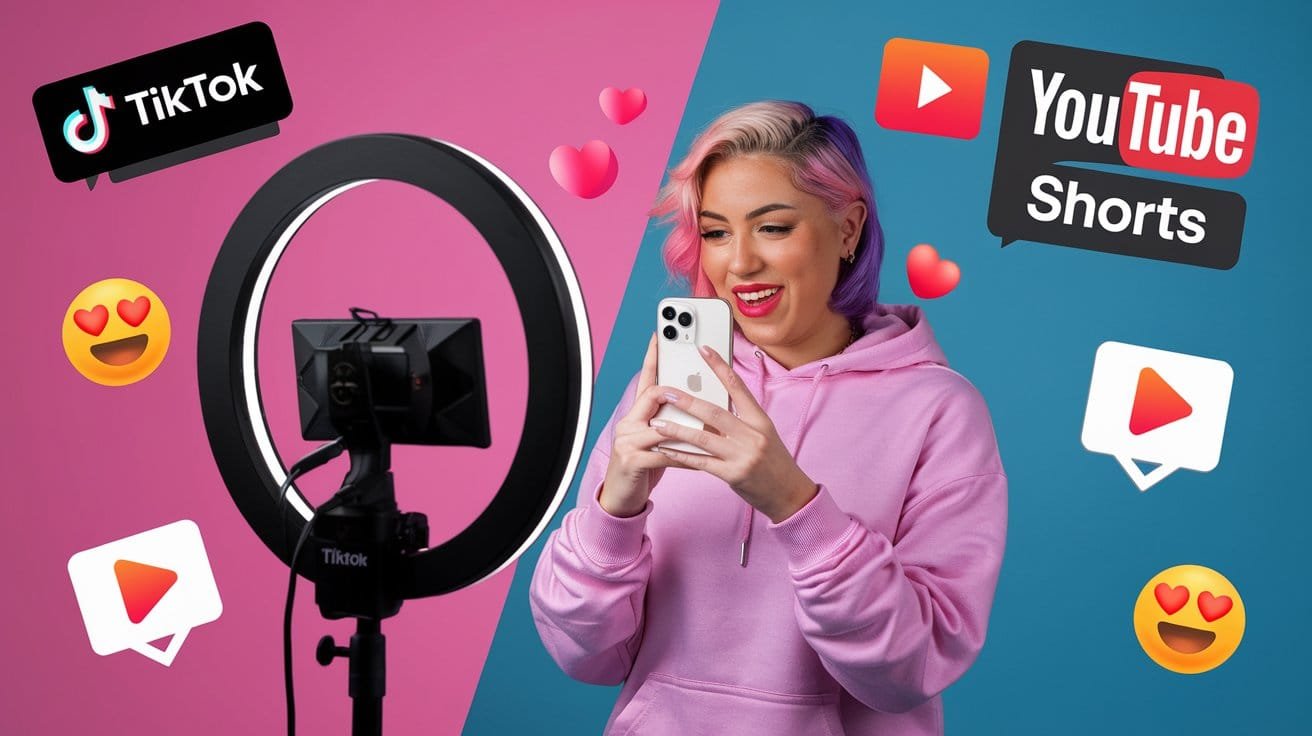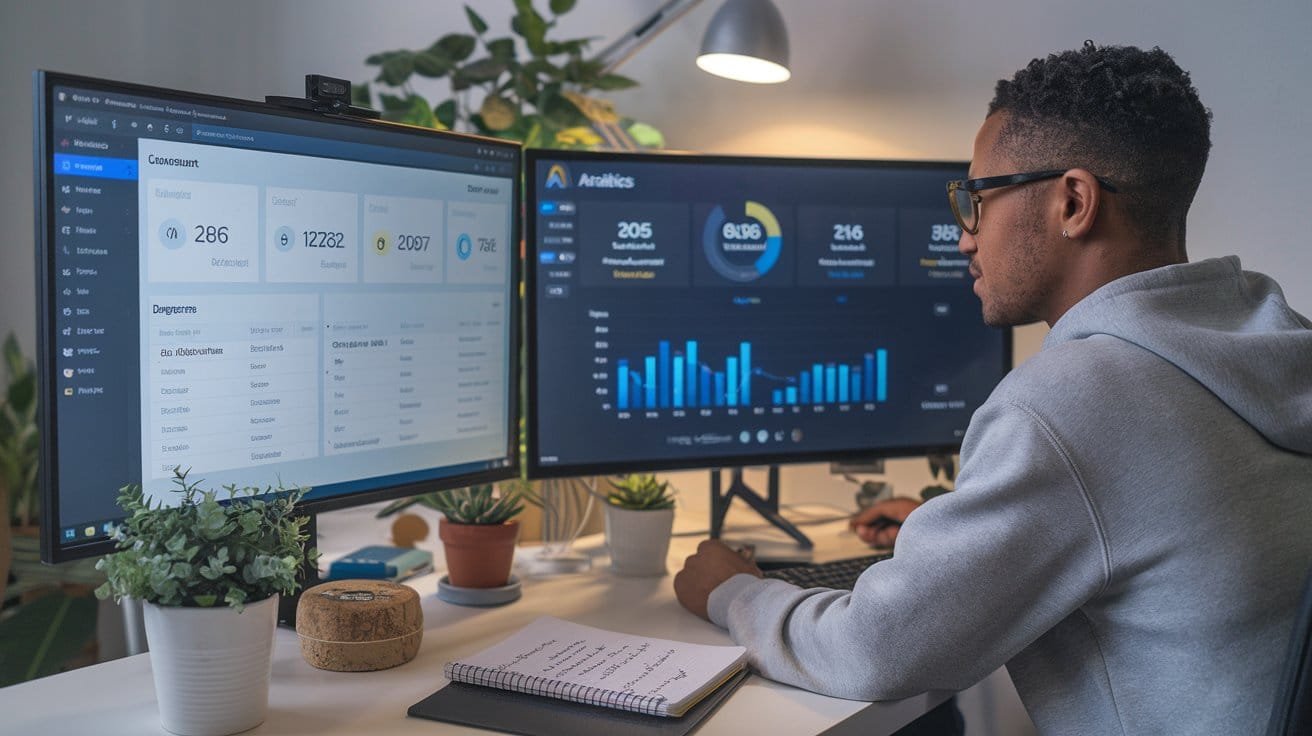
In 2025, blogging is not just thriving—it’s transforming. With over 7.5 million blog posts published daily, the competition has never been fiercer, and standing out requires more than good writing. Today’s readers demand depth, value, and innovation. Trends like AI-powered content creation, short-form video blogging, and data-driven strategies are reshaping the landscape, pushing bloggers to adopt new tools and strategies to stay ahead.
What’s driving this evolution? A shift toward value-driven, long-form content that offers actionable insights, personalized multimedia experiences, and unparalleled user engagement. It’s no longer enough to produce quick reads or surface-level updates. Blogs that succeed in 2025 will deliver real substance, catering to increasingly discerning audiences while meeting Google’s E-E-A-T standards for expertise, authority, and trust.
This post dives into the top 10 blogging trends that will dominate in 2025. You’ll discover how to refine your content strategy, integrate new technologies, and create a blog that attracts readers and ranks on search engines. Whether you’re an established content creator or just starting, these trends will help you remain relevant and competitive in the rapidly evolving blogging world.
Let’s jump in!
DISCLOSURE: WebIncomeJournal is supported by readers like yourself. We may earn an affiliate commission when you purchase through our links, which enables us to offer our content for free. Learn more here.
Trend 1: AI-Powered Content Creation

One of the biggest trends that will dominate the blogging landscape in 2025 will be the adoption of AI-powered content creation. With reports showing that 80% of bloggers now use AI tools, this technology has become a cornerstone of modern content creation. From idea generation to drafting and editing, AI is reshaping how bloggers work, offering unparalleled efficiency and creativity.
One of the most significant advantages of AI in blogging is its ability to generate content ideas tailored to specific audiences. Tools like ChatGPT, ContentBot.ai, and SEOContent Machine analyze trends, keywords, and reader behavior to suggest engaging topics. This saves hours of brainstorming and ensures content remains relevant. Additionally, AI-powered editing tools like Grammarly and Hemingway improve writing clarity, while platforms like Rank Math assist with on-page SEO optimization, ensuring blogs perform well on search engines like Google.
However, the rise of AI isn’t without challenges. Ethical considerations, such as maintaining authenticity and avoiding plagiarism, remain hot topics. Relying too heavily on AI can strip content of its personal touch, risking a disconnect with readers. It’s important therefore that you strike a balance. Use AI to enhance—not replace—your unique voice.
This notwithstanding, success stories demonstrate the potential of AI when used effectively. For instance, popular marketing platforms like HubSpot employ AI to personalize content recommendations, boosting user engagement. Bloggers using AI-generated visuals and captions on platforms like Instagram and TikTok report higher interaction rates.
There’s no doubt that AI will become an indispensable tool for bloggers in 2025, however, its true power will lie in thoughtful integration. The way to go is to pair its effectiveness with your human creativity. This way you can deliver content that resonates deeply with your readers while staying ahead in a competitive space.
Recommended: WordPress for Beginners: The Ultimate Guide to Starting Your First Blog in 2024
Trend 2: The Rise of Short-Form Video Blogging

Another trend that will be prevalent in the blogging space in 2025 is the use of short videos for connecting blog readers.
Right now, short-form video content is dominating digital spaces, with platforms like TikTok, YouTube Shorts, and Instagram Reels leading the trend. These platforms capitalize on viewers’ limited attention spans, delivering quick, engaging content in under 60 seconds. For bloggers, this shift represents a powerful way to connect with audiences and enhance their online presence.
Creating short, impactful videos allows you to summarize key points, highlight tips, or introduce blog topics in a visually compelling way. For instance, if you’re a food blogger you can showcase a 30-second recipe demo on TikTok. This will help drive traffic back to your recipe post. Similarly, a travel blogger could use YouTube Shorts to share glimpses of destinations, encouraging viewers to explore detailed itineraries on their blog.
Integrating video into blog posts adds another layer of engagement. Embedding short clips directly into articles can boost time-on-page metrics, a key factor in SEO. Studies by Wyzowl indicate that 89% of businesses report increased traffic from video marketing, suggesting its effectiveness in attracting and retaining audiences.
To succeed in short-form video blogging, focus on clear messaging, strong visuals, and optimized captions or text overlays. Include a call-to-action directing viewers to your blog for more information. Additionally, use trending audio and hashtags on platforms like TikTok to increase visibility.
By combining the immediacy of video with the depth of blog content, you can create a dynamic, multi-channel strategy. This approach enhances brand awareness, drives lead generation, and supports sales conversions while keeping your content relevant in a video-first digital landscape.
Trend 3: Emphasis on User Experience (UX)
Another blogging trend you will need to watch for in 2025 is the growing emphasis on user experience. If you’re in any way familiar with Google’s recent Helpful Content Updates (HCU), you’ll understand that user experience (UX) plays a dominant role in the success of blogs these days. It impacts everything from reader engagement to SEO rankings.
Reports already show that websites that load quickly, adapt seamlessly to mobile devices, and offer an intuitive design keep visitors on the page longer, however, if a site takes more than three seconds to load, 53% of visitors will abandon it.
Besides, Google prioritizes blogs with excellent UX. Metrics like Core Web Vitals, which measure loading speed, interactivity, and visual stability, directly impact search rankings. According to research, 53% of mobile users abandon a site if it takes more than three seconds to load, emphasizing the need for speed.
Key Elements of Great UX
- Website Speed: Compress images, use caching, and choose reliable hosting platforms like WordPress or Nexcess to ensure your blog loads quickly.
- Mobile Responsiveness: Over 60% of web traffic comes from mobile devices. A responsive design ensures your blog looks great and functions smoothly on any screen size.
- Intuitive Navigation: Simple menus, clear calls-to-action, and a clean layout help readers find what they’re looking for effortlessly.
Tips to Enhance Your Blog’s UX
- Optimize for Mobile: Use tools like Google’s Mobile-Friendly Test to identify and fix issues.
- Improve Loading Speed: Minimize plugins, enable browser caching, and compress media files with tools like TinyPNG.
- Streamline Design: Avoid clutter. Use white space strategically and employ a clear, consistent color scheme.
- Focus on Accessibility: Use readable fonts, alt text for images, and descriptive links to ensure inclusivity.
A stellar UX doesn’t just make your blog more appealing—it builds trust and encourages repeat visits. By prioritizing the user’s journey, you’re setting the stage for greater engagement and long-term success in the competitive blogging landscape.
Recommended: Must-Have Premium Plugins for Your WordPress Site (2024 Top Picks!)
Trend 4: Integration of Multimedia Content

In 2025 multimedia content will continue to be an essential part of blogging, with videos, podcasts, and interactive media enhancing how readers consume information. Adding these elements not only increases engagement but also helps retain readers by making your content more dynamic and accessible.
Videos, for instance, are particularly effective at capturing attention. According to Wyzowl, 91% of consumers prefer video content from brands. Embedding short tutorials, product demonstrations, or interviews within blog posts can provide extra value to readers. Tools like YouTube and Vimeo make uploading and embedding videos straightforward.
Podcasts are another growing trend. With platforms like Spotify and Apple Podcasts making audio content widely accessible, adding podcast snippets or links to blog posts can appeal to readers who prefer listening over reading. For recording and editing, tools like Audacity or Descript are helpful for beginners.
Interactive elements such as polls, quizzes, or infographics can also enhance user engagement. Services like Canva and Typeform make it simple to create visually appealing and interactive content that complements your blog.
Effective Strategies for Multimedia Integration
- Embed Videos: Use platforms like YouTube to host and embed tutorials, demonstrations, or interviews relevant to your blog topic.
- Incorporate Podcasts: Add audio content for readers who prefer listening while multitasking. Podcasts hosted on Spotify or Anchor can complement written blogs by offering deeper insights or expert opinions.
- Add Interactive Elements: Quizzes, polls, and clickable infographics create opportunities for readers to engage directly with your content.
Top Tools for Multimedia Integration
- Canva: Create custom graphics, charts, and infographics.
- Lumen5: Turn blog posts into videos quickly and easily.
- Anchor: Record and publish podcasts without advanced equipment.
- ThingLink: Design interactive visuals, adding clickable tags to images and videos.
By seamlessly blending text with multimedia, bloggers can deliver content that informs, entertains, and inspires. Multimedia not only enhances reader satisfaction but also builds stronger connections, making your blog a go-to resource in the digital space.
Trend 5: Focus on Long-Form, In-Depth Content
In 2025 there will be a greater focus on long-form content as search engines increasingly reward articles that offer detailed and valuable insights. Studies by Backlinko show that the average top-ranking page on Google contains over 1,400 words. This emphasizes the correlation between longer content and better search engine performance.
In-depth content allows readers to fully explore a topic, positioning your blog as an authoritative source. This approach is especially effective for addressing complex subjects, answering common questions, and solving problems comprehensively. Long-form posts keep readers engaged longer, reducing bounce rates and increasing the likelihood of social shares.
Best Practices for Creating Long-Form Content
- Begin with thorough Research: Use tools like Google Trends or AnswerThePublic to identify questions people are searching for.
- Use a Clear Structure: Break the content into digestible sections using subheadings. Platforms like WordPress offer plugins like Table of Contents Plus to help organize longer posts.
- Implement Data and Examples: Support your points with statistics, case studies, or real-life examples to add depth and relevance. Tools like HubSpot’s blog resources or Neil Patel’s analytics insights can be invaluable here.
- Incorporate Visuals: Add infographics, charts, or videos to maintain reader interest and make complex information easier to understand.
- Make It Actionable: Include practical tips, step-by-step guides, or templates readers can apply immediately.
How to Keep It Engaging
- Mix short, punchy sentences with detailed explanations to maintain a dynamic flow.
- Use storytelling or personal anecdotes to connect with your audience.
- Invite interaction by posing questions or encouraging feedback in the comments.
By focusing on long-form, in-depth content, you can provide substantial value, improve SEO performance, and position yourself as go-to expert in your niche. This trend isn’t just about writing more—it’s about writing better.
Related: WordPress for Beginners: The Ultimate Guide to Starting Your First Blog in 2024
Trend 6: Rise of Voice Search Optimization
In the last few years we have consistently highlighted that voice search is a trend to look forward to. As we step into the New Year we can say with confidence that voice search will definitely take flight as voice-activated devices like Alexa, Google Assistant, and Siri are becoming staples in homes and workplaces. This growing reliance on voice search will reshape how people interact with search engines. Unlike typed queries, voice searches are conversational and often longer. For example, instead of typing “best SEO tools,” users might ask, “What are the best SEO tools for beginners?”
This shift demands new strategies for optimizing blog content. To align with voice search trends, focus on creating content that answers specific questions. Use natural language and phrases that mimic how people speak. Incorporating FAQ sections within blog posts is especially effective, as they match the question-and-answer format of voice searches.
For businesses, optimizing for voice search ties directly to goals like brand awareness, lead generation, and sales conversion. Ranking for voice queries can position your brand as a trusted source, driving targeted traffic and improving engagement.
Techniques for Optimizing Blog Content for Voice Search
To optimize your content for voice search, it is important to prioritize long-tail keywords, structured data, and local SEO. Many voice searches have local intent, such as “Where’s the nearest coffee shop?” Ensuring your blog and website include accurate local information can boost visibility.
As voice search adoption grows, your blogging strategies must evolve. Align your content with user intent, providing clear and direct answers to common questions. By focusing on voice search optimization now, bloggers can stay ahead, enhancing their reach while supporting broader business objectives like conversions and customer retention.
Trend 7: The Evolution of Search Engine Optimization (SEO)

In 2025, we can expect SEO to continue the rapid change that characterized the industry in the last few years. Google’s focus on E-E-A-T (Expertise, Experience, Authority, Trust) will continue to shape the landscape of SEO.
For bloggers, this means building content that demonstrates real-world expertise, provides unique insights, and earns user trust. For instance, a blog about fitness will rank higher if written by someone with credentials or personal experience in the field. Establishing authority through quality backlinks and credible references is critical.
Core Web Vitals will continue to a game-changer. These metrics—focusing on loading speed, interactivity, and visual stability—directly impact search rankings. Blogs that load slowly or have poor mobile usability risk losing traffic, even if their content is excellent.
It’s important therefore that you optimize your images, improve server response times, and ensure you use responsive design in order to meet Core Web Vitals benchmarks.
Adopt a proactive approach to stay ahead as Google’s algorithm updates will continue to drive these changes. Regularly update older posts with fresh data, ensure your site’s technical SEO is solid, and focus on user intent. Tools like Google Search Console and analytics platforms can help identify areas for improvement.
Aligning blog content with business goals like brand awareness, lead generation, or sales conversion requires prioritizing content quality and technical performance. By consistently delivering value-driven, optimized posts, yous can adapt to changes while maintaining audience trust and achieving your objectives.
Recommended: 10+ On-Page SEO Optimization Techniques Top Bloggers Swear By
Trend 8: Growth of Niche Blogging
With millions of blogs competing for visibility, niche blogging is making a comeback. Bloggers who delve into specialized topics will definitely find it easier to build authority and trust among their audience. This agrees with recent data which indicates that 72% of bloggers attribute their success to niche focus.
Niche blogging is growing rapidly because readers prefer content that feels personal, relevant, and authoritative. Instead of trying to appeal to everyone, niche bloggers build dedicated communities by catering to unique interests.
One example is Pinch of Yum, a food blog that specializes in recipes for everyday cooks. By consistently delivering valuable, relatable content, it has cultivated a loyal audience and generated income through affiliate marketing, sponsored posts, and a successful eBook series. Another is The Points Guy, which focuses on maximizing travel rewards. It’s a go-to resource for frequent travelers, offering expert advice that directly aligns with its readers’ needs.
The benefits of niche blogging include higher engagement and trust. Readers are more likely to subscribe, share content, and become repeat visitors when a blog addresses their specific interests. For bloggers, niche content also improves search engine rankings by targeting less competitive keywords, making it easier to attract organic traffic.
To succeed with this trend it’s important you focus on creating high-quality content that solves problems or fulfills desires. Engage directly with your audience through comments and social media to build relationships and better understand their needs. Whether your goal is brand awareness, lead generation, or monetization through ads or affiliate links, niche blogging offers a clear path to creating a loyal readership while achieving your business objectives.
Recommended: How to Use Auto Blogging to Create an Automatic Blog and Make Money This Christmas Season
Trend 9: Increased Importance of Data-Driven Content

In 2025, data-driven content will become an important consideration. With the growing competition in the blogging space, relying on intuition alone will not be enough. Data-driven content uses analytics to inform decisions, ensuring blogs align with audience needs and business goals like brand awareness, lead generation, and sales conversion.
Analytics tools such as Google Analytics, SEMrush, and Ahrefs provide insights into what’s working and what isn’t. For instance, understanding metrics like page views, bounce rates, and time on page helps identify high-performing content. Keyword data and search trends reveal opportunities to create content that resonates with readers while improving search rankings.
The benefits of data-driven content are clear. According to HubSpot, marketers who consistently track performance are more likely to achieve their goals. Data ensures resources are focused on content that drives results, whether that’s growing traffic, boosting engagement, or increasing revenue.
Take advantage of this trend, you should deploy practical strategies like analyzing audience demographics to create tailored content, monitoring search intent to target the right keywords, and using heatmaps to understand user behavior on the site. You should also regularly review and update underperforming posts to maximize the value of existing content.
This is a trend that you should not ignore because by leveraging data you can make informed choices, adapt to audience preferences, and deliver valuable, optimized content. A data-driven approach not only strengthens content strategies but also ensures long-term growth and success in an increasingly competitive digital space.
Trend 10: Community Building and Engagement
Google’s algorithm updates in 2024 that favored Reddit content in search results highlighted a significant change in how the search engine giant prioritizes content. These updates, designed to reward authentic and helpful content, aligned well with the nature of discussions found on Reddit and hence the SEO gain for Reddit.
However, this was a signal for businesses and SEO professionals. Realizing that Google has continued to emphasize authenticity and user engagement with its HCUs, they are now adapting their strategies. The focus is shifting from solely optimizing for keywords to fostering genuine discussions and community-driven content.
This is a trend that you should take advantage of right now. Work on building a strong community around your blog. This is essential for fostering loyalty and driving long-term growth. Engaged readers are more likely to return, share your content, and contribute to discussions, creating a vibrant ecosystem that amplifies your blog’s reach and impact.
Encouraging reader interaction starts with crafting content that invites participation. End posts with clear questions or calls to action, such as asking for opinions or experiences. Adding features like comments sections, polls, or surveys also encourages readers to share their thoughts.
Social media platforms and online forums play a crucial role in expanding community engagement. Sharing blog posts in niche Facebook groups, Reddit threads, or Twitter discussions helps connect with like-minded individuals. Regularly engaging with followers by responding to comments or hosting Q&A sessions builds trust and rapport.
The benefits of community engagement are significant. According to a study by Sprout Social, 64% of consumers want brands to connect with them, and blogs with active communities tend to see higher retention and conversion rates. For example, fitness bloggers who host online challenges or discussion groups often see increased participation and loyalty.
To create a thriving community, consistently post valuable, relevant content while fostering a sense of connection. Readers who feel involved are more likely to support your goals, whether those are brand awareness, lead generation, or sales. Community building isn’t just an add-on—it’s a strategic way to enhance your blog’s overall success.
Conclusion
The world of blogging in 2025 is brimming with opportunities for those ready to embrace change and innovation. From harnessing the power of AI-powered content creation to mastering short-form video blogging, the trends we’ve explored highlight the dynamic and evolving nature of the industry. Prioritizing user experience, integrating multimedia content, and creating long-form, in-depth articles will set your blog apart, ensuring it remains relevant and engaging in an increasingly competitive space.
Staying ahead requires more than just knowing the trends—it’s about implementing them effectively. By optimizing for voice search, tapping into niche blogging, and leveraging data-driven strategies, bloggers can meet audience demands while satisfying search engine algorithms like Google’s E-E-A-T criteria. Building a loyal community and using platforms like WordPress, YouTube, and Instagram to connect with your audience further solidifies your blog’s position as a trusted resource.
The future of blogging is about more than producing content—it’s about delivering value. Success lies in continuous learning, adapting to technological advances like AI tools and emerging platforms, and staying attuned to reader preferences.
Whether you’re a seasoned content creator or just starting, implementing these blogging trends for 2025 will help you maintain a competitive edge and drive meaningful growth.
Will love to hear your top trend(s) in 2025. Share with us in the comments below.







This post is packed with valuable information! Thanks for sharing such useful content.